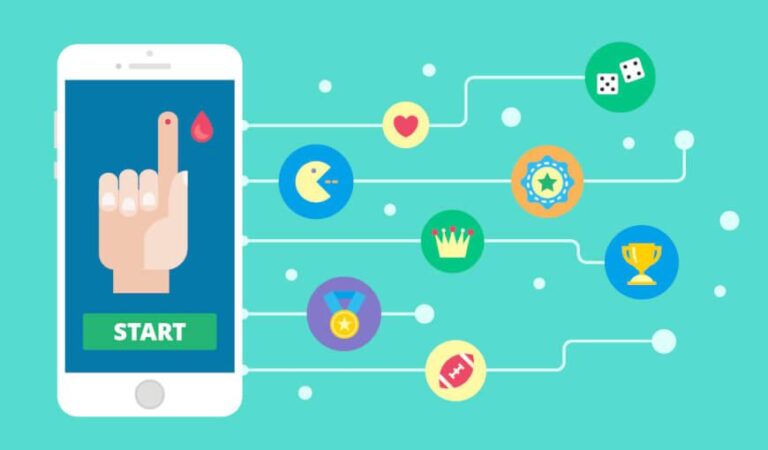In an era where digital health solutions are becoming increasingly integral to personal well-being, HealthTech apps face the critical challenge of maintaining user engagement. Gamification—the strategic request of game-design elements in non-game contexts—has emerged as a powerful tool to address this challenge. By transforming routine health tasks into interactive and rewarding experiences, gamification not only motivates users but also fosters sustained behavioral change. This article explores how gamification enhances engagement in HealthTech apps, examining the key mechanisms behind its effectiveness and highlighting practical examples of its implementation in the healthcare technology landscape.
Table of Contents
- The Psychological Foundations of Gamification in HealthTech Applications
- Design Strategies to Maximize User Motivation and Retention
- Integrating Reward Systems to foster Long-Term Healthy Behaviors
- Best Practices for Balancing Fun and Functionality in HealthTech Platforms
- In Retrospect
The Psychological Foundations of Gamification in HealthTech Applications
At the core of gamification’s success in HealthTech lies a deep understanding of psychological drivers that motivate human behavior. Elements such as reward systems, progress tracking, and social interaction tap into intrinsic motivators like achievement, autonomy, and relatedness. When users receive timely feedback thru points, badges, or levels, dopamine release reinforces positive behavior, creating a loop of continuous engagement. This principle leverages the brain’s natural craving for accomplishment and recognition, which is crucial for sustaining long-term adherence to health routines within digital platforms.
furthermore, gamification leverages behavioral economics by introducing elements of challenge and unpredictability that mimic real-life game dynamics. this stimulates curiosity and intrinsic drive, converting mundane health tasks into stimulating experiences. Key psychological triggers include:
- Goal Gradient Effect: Increased motivation as users approach milestones.
- Loss Aversion: Fear of missing out on rewards encourages consistent participation.
- social Proof: Shared achievements foster community support and accountability.
These foundations collectively transform passive tracking into active engagement, ultimately empowering users to take control of their health with renewed enthusiasm and confidence.
Design Strategies to Maximize User Motivation and Retention
Maximizing user motivation and retention in HealthTech apps requires a thoughtful blend of psychology and design.Incorporating progressive challenges paired with clear, achievable goals helps maintain users’ interest over time. By introducing adaptive difficulty levels,the app can cater to varying user capabilities,ensuring that engagement remains neither too overwhelming nor too simplistic. Additionally,leveraging reward systems such as badges,points,or unlocking new features can create a tangible sense of accomplishment,reinforcing positive behaviors and encouraging sustained use.
Designing for long-term user retention also involves fostering a sense of community and accountability. Integrating social elements such as leaderboards, team challenges, and shared milestones motivates users through amiable competition and peer support. Other effective strategies include:
- Personalized feedback loops that celebrate small wins and offer constructive insights
- Visual progress tracking tools that make achievements clear and rewarding
- Regular content updates and in-app events to refresh user interest
By intertwining these elements seamlessly into the user experience,HealthTech apps can significantly boost both motivation and retention,guiding users towards healthier habits with lasting impact.
Integrating Reward Systems to Foster Long-Term Healthy Behaviors
Embedding dynamic reward systems within health technology applications serves as a critical catalyst for sustaining user motivation over extended periods. These mechanisms do not merely offer incentives but strategically reinforce positive behavior patterns by providing immediate feedback and recognition. As a notable example, tiered achievements and badges encourage incremental progress appreciation, translating into a sense of accomplishment that drives continuous engagement. Moreover, incorporating personalized rewards aligned with individual health goals ensures relevance and enhances user commitment, making the journey toward wellness both meaningful and gratifying.
To effectively nurture lasting healthy habits, it is essential to design reward frameworks that balance challenge and attainability.Some effective approaches include:
- Progressive rewards that escalate in value, sustaining interest as users advance.
- Social incentives, such as leaderboards and community recognition, which leverage peer motivation.
- Non-monetary rewards, including unlocking educational content or access to new features, fostering intrinsic motivation.
By thoughtfully integrating these components, HealthTech apps transform routine tracking into an empowering experience that champions resilience and long-term lifestyle transformation.
Best Practices for Balancing Fun and Functionality in HealthTech Platforms
Striking the ideal harmony between enjoyment and practical use within HealthTech platforms requires a nuanced approach where user motivation and seamless functionality coexist.Integrating game design elements such as progress tracking, challenges, and reward systems can transform routine health tasks into engaging experiences without compromising their primary goals. These interactive components should be thoughtfully embedded to encourage consistent user participation, promote adherence to health protocols, and facilitate measurable progress, all while maintaining the platform’s credibility and ease of use.
To sustain this balance, developers must prioritize intuitive navigation and clear feedback mechanisms that reinforce users’ sense of achievement.Effective strategies include:
- Incorporating adaptive difficulty that aligns with individual users’ health conditions and goals
- Offering personalized rewards that resonate with users’ preferences and motivate sustained engagement
- Ensuring data privacy and transparency to build and maintain user trust
- Designing narratives or themes that contextualize tasks in meaningful ways
By aligning fun elements with evidence-based health objectives, platforms not only boost engagement but also enhance outcomes and long-term user satisfaction.
In Retrospect
the integration of gamification within HealthTech apps represents a powerful strategy to boost user engagement and promote sustained healthy behaviors.By incorporating game-like elements such as rewards, challenges, and progress tracking, these platforms can transform routine health management into an interactive and motivating experience. As the digital health landscape continues to evolve, leveraging gamification not only enhances user satisfaction but also contributes to better health outcomes. Developers and healthcare professionals alike should consider embracing these techniques to create more effective, user-centric HealthTech solutions that truly resonate with their audiences.

